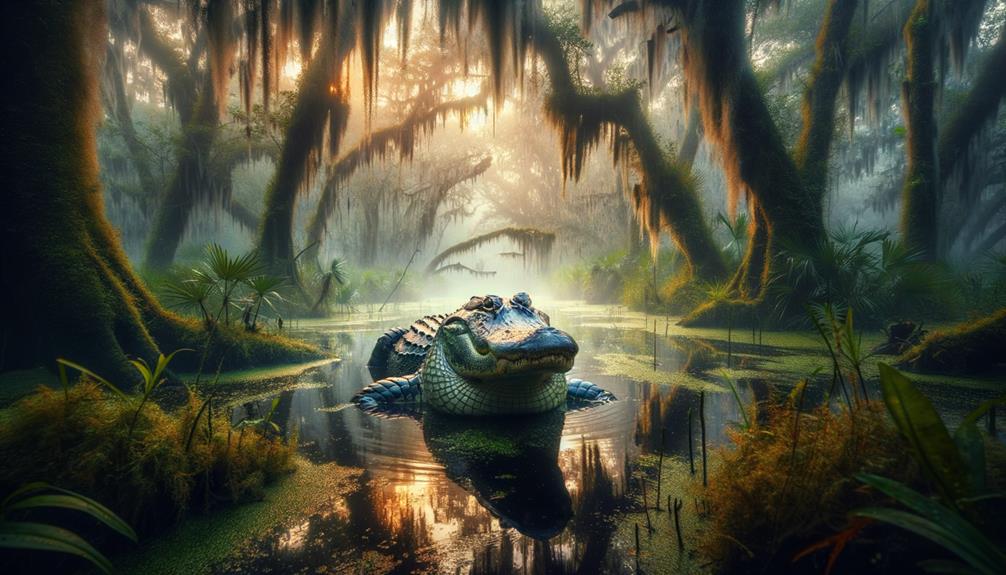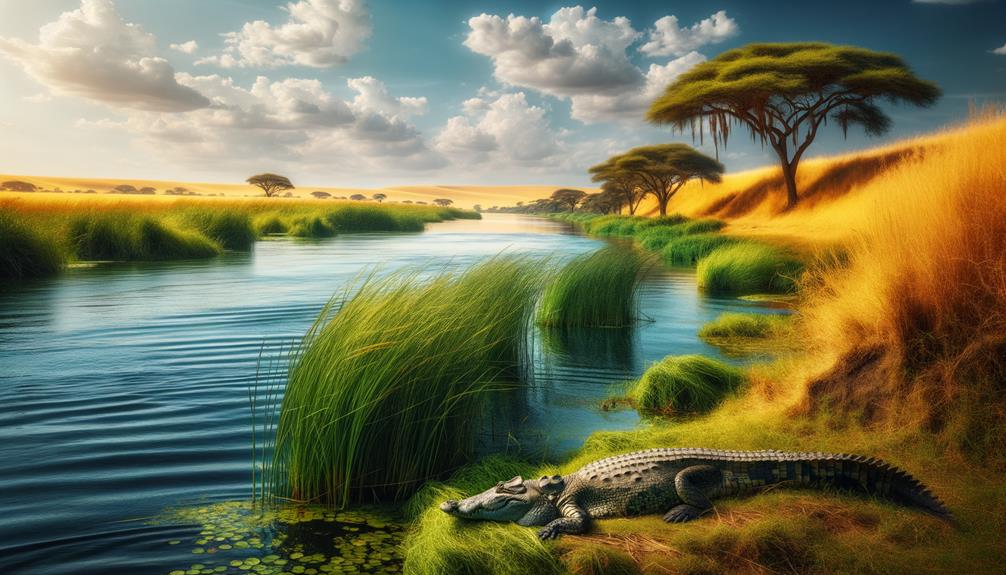Saltwater crocodiles are the ultimate aquatic predators. Reaching lengths of up to 7 meters and weighing over 2,000 kg, these giants are a force to be reckoned with. Their streamlined bodies make them agile swimmers, and they possess the strongest bite force among living animals, clocking in at an astonishing 16,414 newtons. Found in coastal areas from Southeast Asia to northern Australia, they adapt seamlessly to both freshwater and saltwater environments. Their diverse diet includes fish and large mammals, which they devour using their notorious 'death roll' technique. As apex predators, they have honed their hunting strategies to perfection. To delve deeper into the fascinating world of these incredible creatures, read on.
Key Takeaways
Saltwater crocodiles are at the top of their food chain, employing diverse hunting strategies to capture a wide variety of prey, from fish to large mammals. Their powerful jaws can exert a bite force of up to 16,414 newtons, making them the strongest of any living animal and a dominant predator. Their streamlined bodies allow for efficient swimming, enabling them to thrive in both freshwater and saltwater environments. These crocodiles use a deadly technique called the "death roll" to dismember larger prey, showcasing their power and strategic hunting methods. Known for their remarkable ability to cross open oceans, they have a broad distribution from India to the southwest Pacific.
Characteristics
Saltwater crocodiles are formidable aquatic predators due to their impressive physical characteristics. They boast massive size, powerful bites, and hydrodynamic bodies designed for efficient swimming. As the largest living reptile, adult males can reach up to 7 meters in length and weigh over 2,000 kg, while adult females are notably smaller, showcasing clear sexual dimorphism. This size difference is critical as it influences their roles as apex predators in their ecosystem.
Their bite force, exceeding 16,000 Newtons, is the strongest of any living animal, allowing them to take down virtually any prey. When hunting, they rely on their powerful jaws and the infamous 'death roll' to dismember larger animals. Their bodies are covered in thick, armored scales, providing protection and aiding in streamlined swimming. Their hydrodynamic shape is perfect for swimming in the open, making them efficient and stealthy hunters.
Saltwater crocodiles have adapted to thrive in both freshwater and marine environments, thanks to salt glands in their tongues. This adaptability, combined with their physical prowess, secures their status as unrivaled apex predators, capable of ambushing and overpowering a diverse range of prey.
Habitat
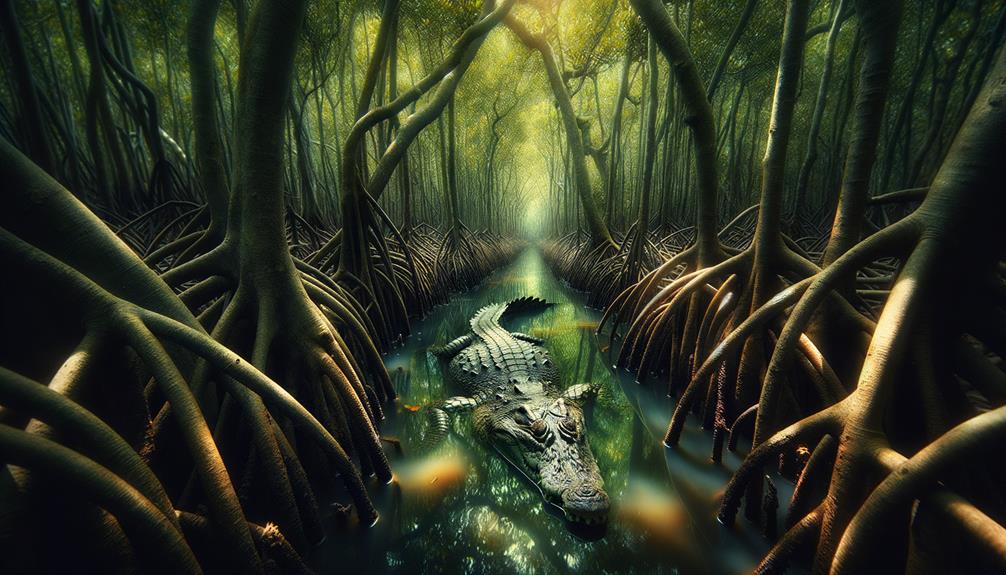
Saltwater crocodiles inhabit a wide range of coastal and estuarine habitats in Southeast Asia and northern Australia. They thrive in mangrove swamps, river mouths, and other brackish water environments. These powerful predators are well-suited to both freshwater and saltwater, allowing them to adapt to different habitats.
Saltwater crocodiles are skilled travelers, capable of crossing open ocean and drifting for days or even weeks. This ability enables them to have a broad distribution, spanning from India to the southwest Pacific, and inhabiting numerous islands and coastal regions. Their adaptability is crucial, as some populations have faced decline in certain areas.
Saltwater crocodiles don't just stick to the coast. They venture inland along rivers and estuaries, thriving in river deltas where freshwater meets the saltwater. The tangled mangrove swamps provide them with perfect camouflage, while the brackish waters of river mouths offer abundant food sources. Their estuarine lifestyle showcases a delicate balance between marine and freshwater ecosystems, highlighting their remarkable adaptability.
Diet and Hunting
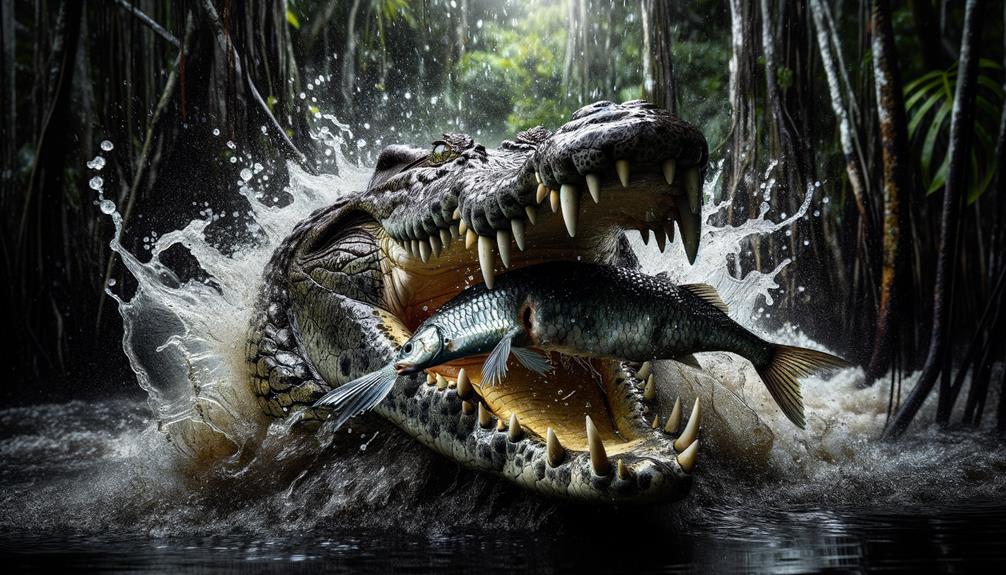
Saltwater crocodiles are formidable predators that employ a diverse array of hunting strategies to capture a wide variety of prey, ranging from fish and invertebrates to large mammals like buffalo and even humans. As opportunistic feeders, they adapt their techniques based on the prey available. They might quietly submerge and swim towards fish or invertebrates before pouncing, or they could knock unsuspecting mammals like macaques off riverbanks into the water.
With an unmatched bite force of up to 16,414 newtons (3,690 lbs-force), saltwater crocodiles can seize and grip their prey with ease. For larger prey, they employ a deadly maneuver known as the death roll, where they spin their bodies violently to tear chunks of flesh or dismember their catch. This technique is particularly effective on large animals like sambar deer, wild boar, and kangaroos, which can weigh up to 92% of the crocodile's own body mass.
These reptiles are more than just brute force; their strategic approach to hunting showcases a remarkable blend of power and cunning, ensuring their place as apex predators in their aquatic habitats.
Reproduction
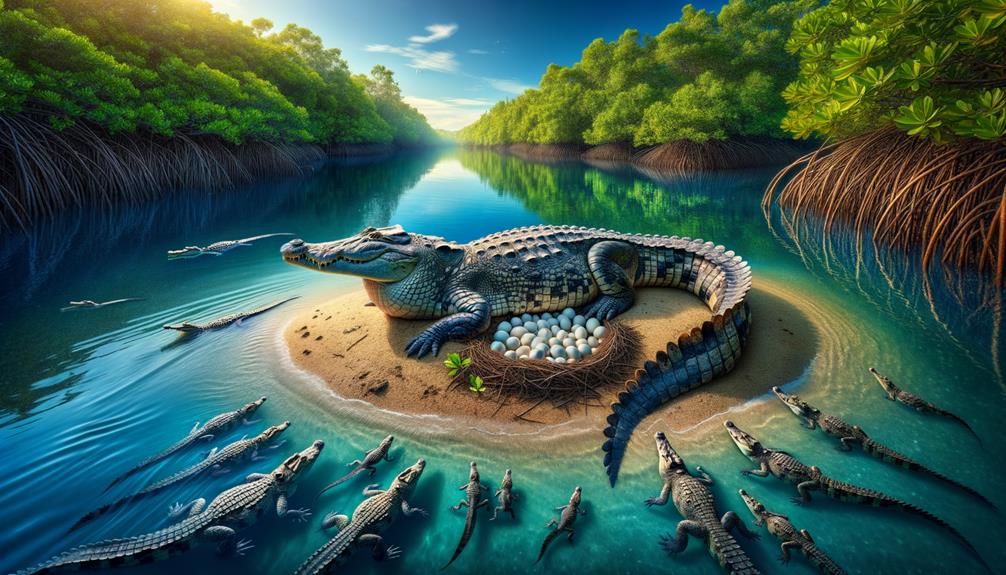
The reproductive strategies of saltwater crocodiles are a crucial aspect of their survival. Reaching sexual maturity around 12-15 years, males typically attain this milestone at a larger size compared to females. Once ready to reproduce, females construct elaborate nests made of mud and vegetation, laying between 40-60 eggs.
The sex of the offspring is determined by the incubation temperature, a fascinating aspect of their biology. The eggs undergo an incubation period of 80-98 days, during which the temperature significantly influences the future population's gender ratio. Hatchlings emerge measuring about 25-30 cm in length, but their journey is fraught with danger. Despite laying a relatively large number of eggs, only about 1% of these hatchlings survive to adulthood due to high infant mortality rates.
Saltwater crocodiles, one of the longest-lived crocodilian species, can live up to 70 years in the wild. This impressive lifespan allows them to reproduce multiple times, ensuring the continuation of their lineage despite the high risks faced by their young. Their reproductive strategies are a testament to their resilience and adaptability.
Human Interactions
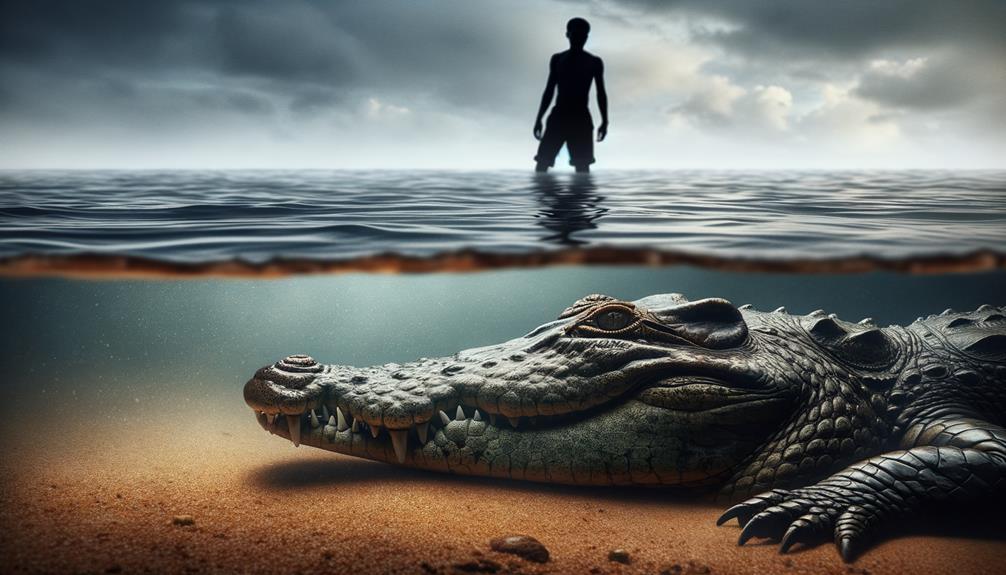
Human interactions with saltwater crocodiles are a complex mix of fascination and danger, shaped by the formidable nature of these apex predators. Encounters with large male saltwater crocodiles often result in human fatalities, making them responsible for more human deaths than any other crocodilian species, with around 1,000 people killed annually. Despite this, attacks on humans are relatively rare considering their total population of about 500,000.
In regions like northern Australia, these interactions are a significant public safety concern. Freshwater rivers and other waterways in these areas are habitats for these aggressive creatures, limiting recreational activities such as swimming and fishing. The threat they pose can't be underestimated, as they've been known to attack people who live or work near these waters.
Interestingly, saltwater crocodiles are also a threatened species, receiving legal protection to safeguard their survival. This duality of being both a danger and a protected animal adds complexity to managing human-crocodile interactions. To minimize risk, it's crucial to avoid swimming in known crocodile habitats and exercise extreme caution near waterways where these predators might lurk.
Frequently Asked Questions
What Is the Saltwater Crocodile's Predator?
Here's a rewritten version of the text, following the provided instructions:
Did you know that a staggering 99% of young saltwater crocodiles don't make it past their first year? Adult saltwater crocodiles, tigers, and humans are the main predators, but territorial disputes often lead to larger crocs preying on smaller ones.
What Animal Can Beat a Saltwater Crocodile?
From my research, I've found that Nile crocodiles and great white sharks are capable of defeating saltwater crocodiles in a fight. On occasion, animals like hippos and Komodo dragons have managed to fend off or kill these formidable reptiles.
What Are Saltwater Crocodiles Natural Enemies?
While exploring the idea that adult saltwater crocodiles have natural predators, I found it's mainly humans they fear. Young ones, however, face threats from large pythons, tigers, and even other crocodiles, highlighting the harsh reality of their environment.
Do Saltwater Crocodiles Eat Sharks?
Saltwater crocodiles are known to prey on sharks, including species like tiger and bull sharks. Their powerful jaws, capable of exerting immense force, allow them to overpower these formidable predators.


